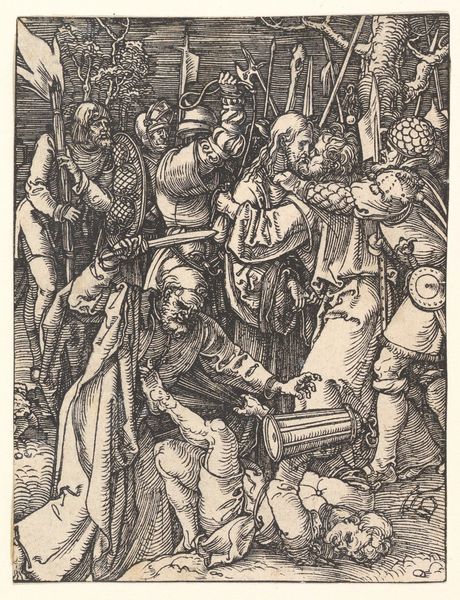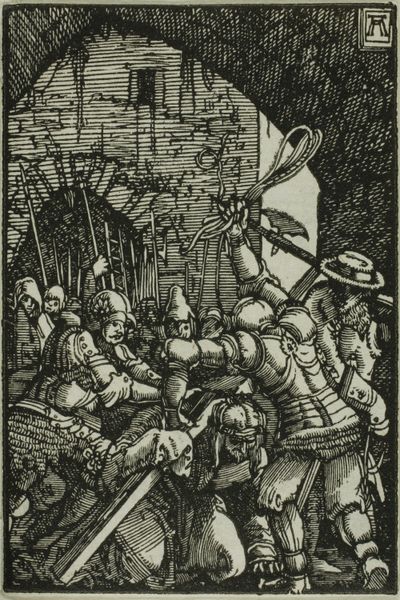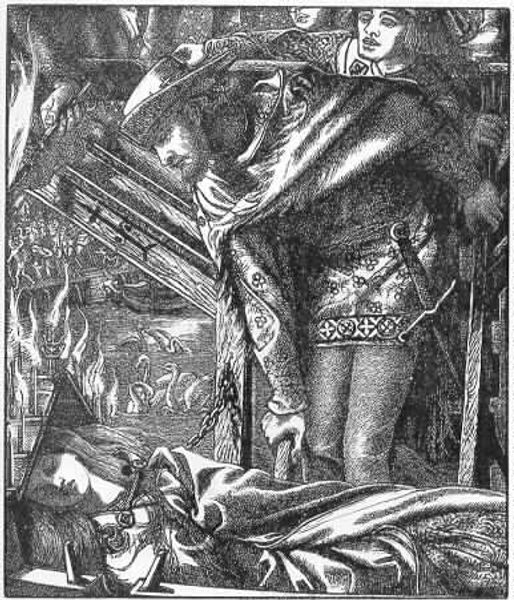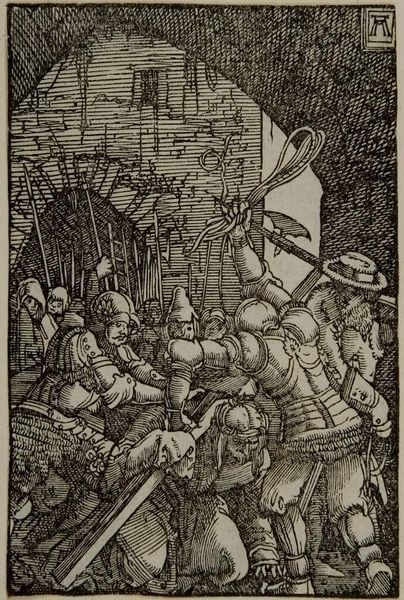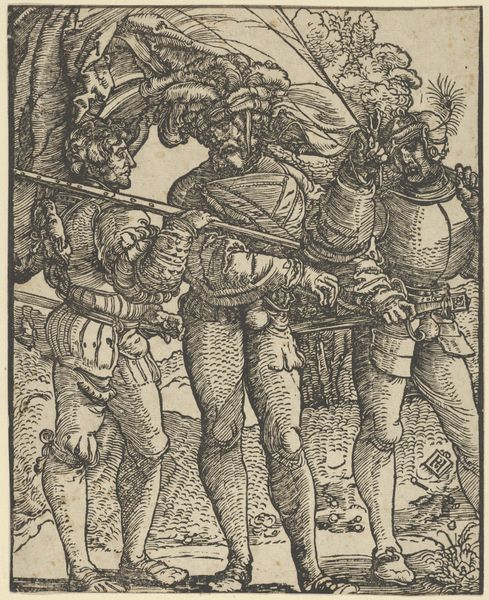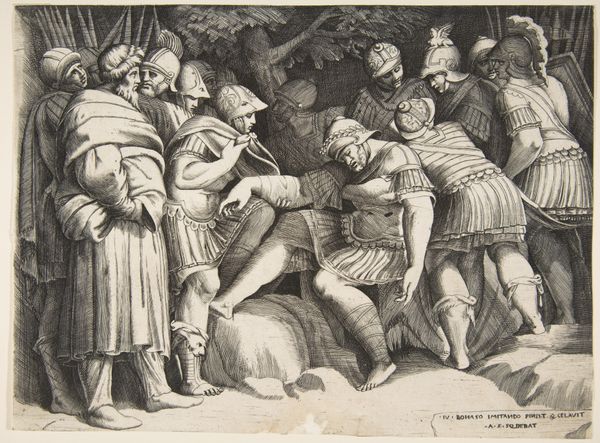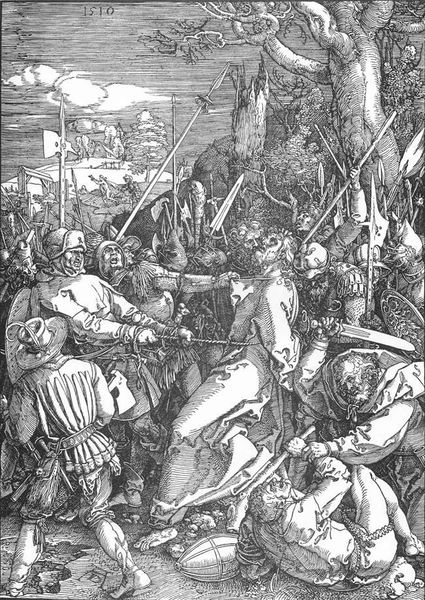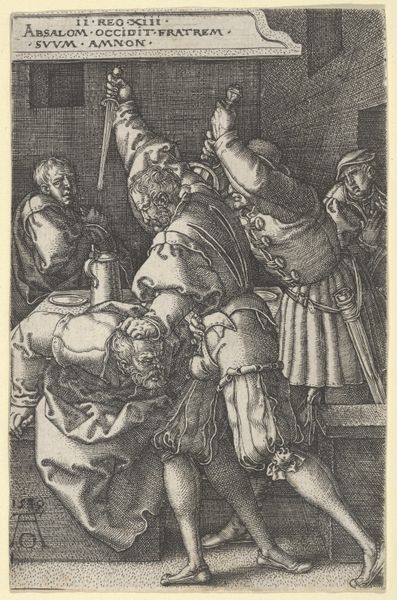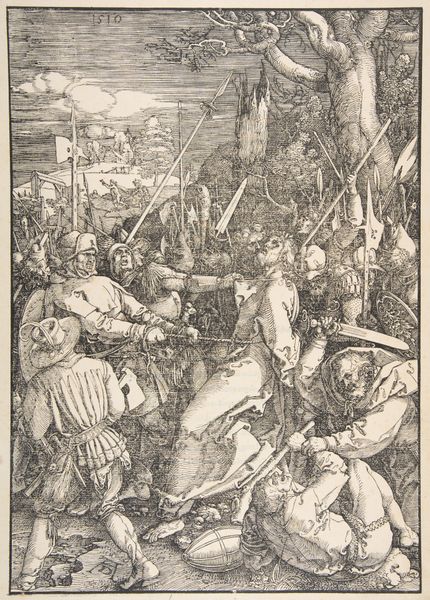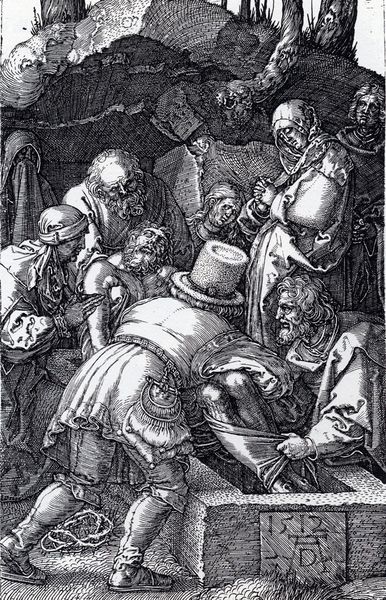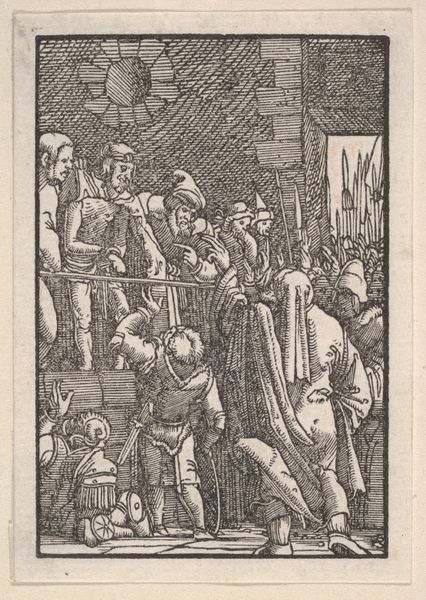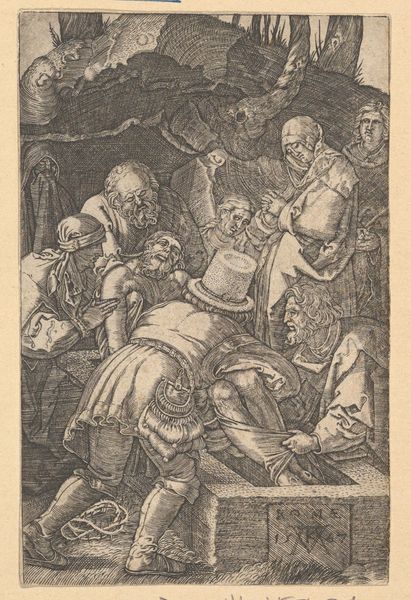
Copyright: Public domain
Curator: Let's turn our attention to Byam Shaw's painting, created in 1910, entitled 'Faust - While Old Mammon Leads the Ball.' Editor: This strikes me as…manic. Anxious, almost. The swirling figures and clashing colours really generate a sense of unease. Curator: Indeed. The dynamism is key. The composition, with its off-kilter perspective, directs the viewer’s gaze straight to the central figure. His gesticulations are almost violently emphatic. Editor: He looks almost puppet-like. His vibrant red costume is fascinating – almost as though he is bleeding into the very fabric of his surroundings. I am curious, though, what kind of paint was used here, and what type of labour practices existed at that time for Byam Shaw? Was he mixing his paints, did he have access to various pigments and raw materials? The conditions surrounding the materials used here are probably very telling of the world Shaw was making artwork in. Curator: Your question invites another layer of interpretation. The raw materials were crucial in Shaw’s artistry – indeed! Shaw was working during a period of intense industrial development. The materiality, perhaps, serves as a stark critique of wealth as a grotesque display, don't you think? Editor: Absolutely! Look at that stage and the costumes... they feel like the kind of ephemeral creations quickly turned over and wasted by theatrical productions, reflective of short-lived pleasure amidst long hours of tedious manual labour behind the stage and in the paintshops and dyeing industries. And those masks…they aren't fooling anyone as far as I'm concerned. Curator: Precisely! The artist seems concerned with deeper philosophical ideas around the commodification of human expression. It reminds one of the writings of Baudrillard. A hyperreality masking some sinister truths? Editor: A great point about sinister truths! It prompts questions about not just the artist’s intentions, but the production system that enables those intentions to be realised. This image encapsulates how social context bleeds directly into the materials. I would suggest one really cannot separate them here. Curator: Ultimately, the painting exists as a fascinating, rather pessimistic portrayal of societal excess. Editor: A vivid reminder that materials do not simply "exist" in a vacuum - they’re deeply embedded within a set of production and societal forces.
Comments
No comments
Be the first to comment and join the conversation on the ultimate creative platform.
